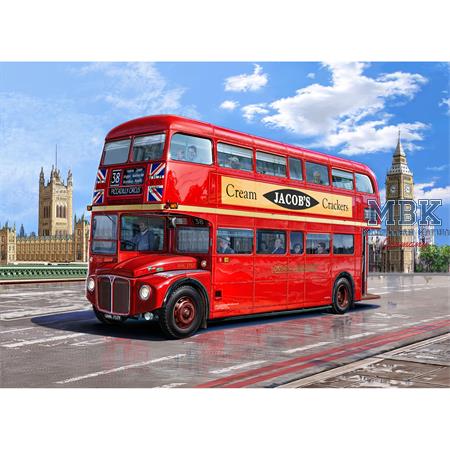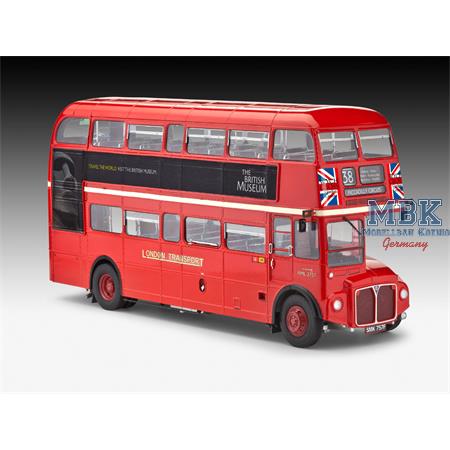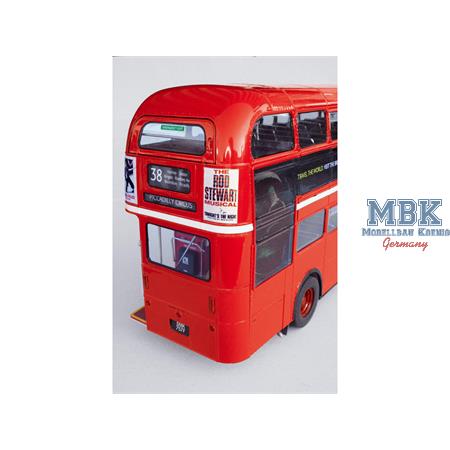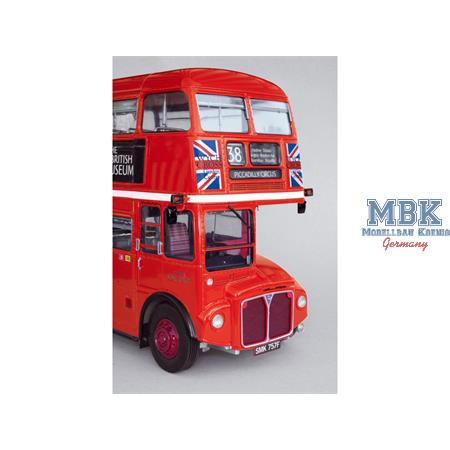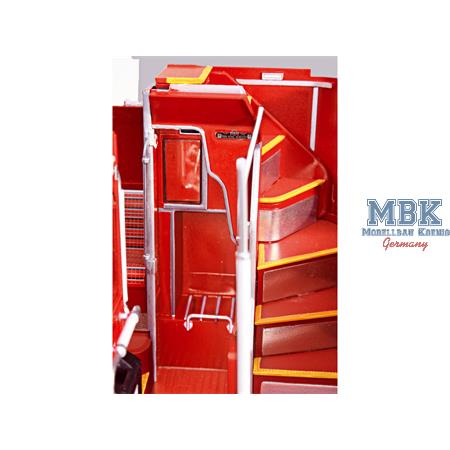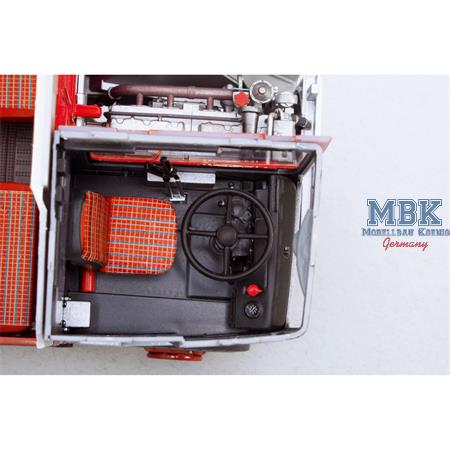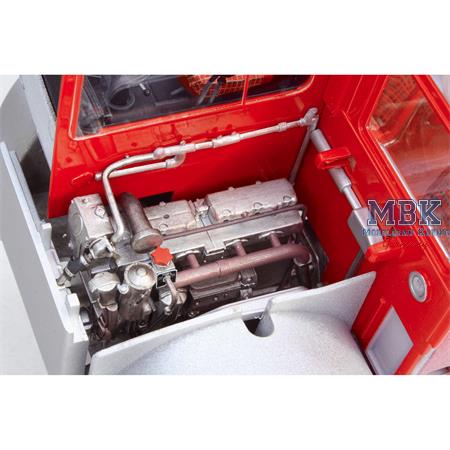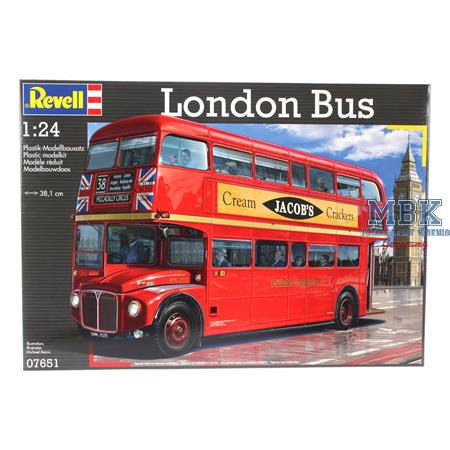
Compared to previous bus types, the Routemaster was considered downright innovative with its integral design of chassis and body.
In particular, the open entry platform at the rear left, which allowed quick entry and exit ( hop on and off ), was characteristic of the double-decker, which was produced in series from 1958.
At the end of the 1950s, changed regulations also allowed buses over nine meters long to be operated on just two axles.
Some Routemasters were then split in the middle and an additional area was added in the middle, which was visible through square windows.
The new bus type, the Routemaster long, or RML for short, now offered space for a total of 72 passengers.
The brilliant success with 15 test vehicles convinced London Transport to order a further 500 examples of the RML, which were produced from 1965 to 1968.
In the 1970s, more and more RMLs began operating in central London.
With the constant presence of the typical red double-deckers on almost all routes, the image of the Routemaster as a typical symbol of London was increasingly consolidated.
It was only in 2005, after almost 50 years of continuous use, that general operation of this London flagship was discontinued.
Plastic model kit
- 391 parts
- multi-part body with all details
- complete interior with all 72 seats
- either Leyland or Scania (after 1996) engine
- removable roof segment
- detailed driver's seat
- Huge decal sheet with seat covers, advertising, warning and maintenance instructions
- lots of glass pieces
- Model length: about 38cm
unbuilt / unpainted
Write now your personal experience with this article and help others with their purchase decision.
